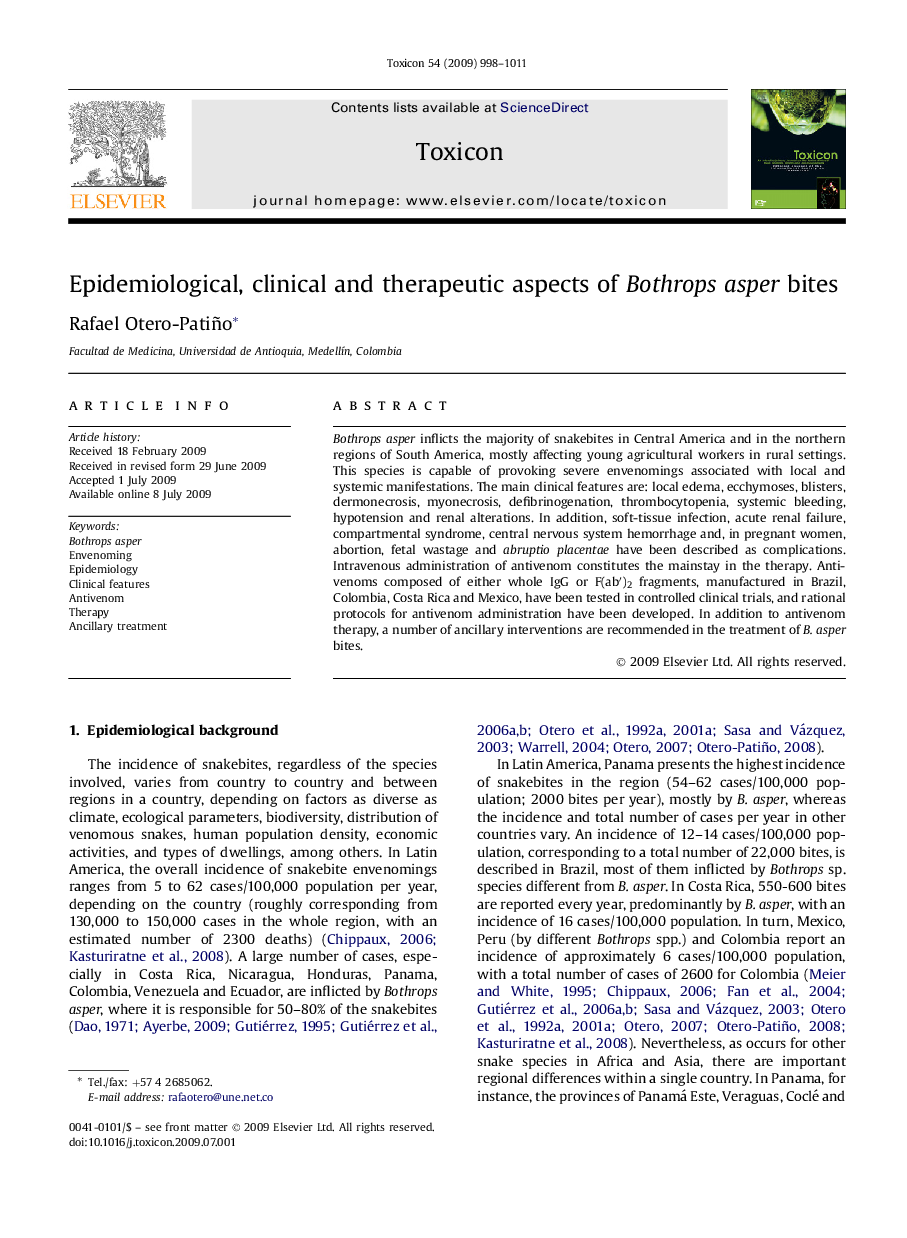| Article ID | Journal | Published Year | Pages | File Type |
|---|---|---|---|---|
| 2065038 | Toxicon | 2009 | 14 Pages |
Bothrops asper inflicts the majority of snakebites in Central America and in the northern regions of South America, mostly affecting young agricultural workers in rural settings. This species is capable of provoking severe envenomings associated with local and systemic manifestations. The main clinical features are: local edema, ecchymoses, blisters, dermonecrosis, myonecrosis, defibrinogenation, thrombocytopenia, systemic bleeding, hypotension and renal alterations. In addition, soft-tissue infection, acute renal failure, compartmental syndrome, central nervous system hemorrhage and, in pregnant women, abortion, fetal wastage and abruptio placentae have been described as complications. Intravenous administration of antivenom constitutes the mainstay in the therapy. Antivenoms composed of either whole IgG or F(ab′)2 fragments, manufactured in Brazil, Colombia, Costa Rica and Mexico, have been tested in controlled clinical trials, and rational protocols for antivenom administration have been developed. In addition to antivenom therapy, a number of ancillary interventions are recommended in the treatment of B. asper bites.
